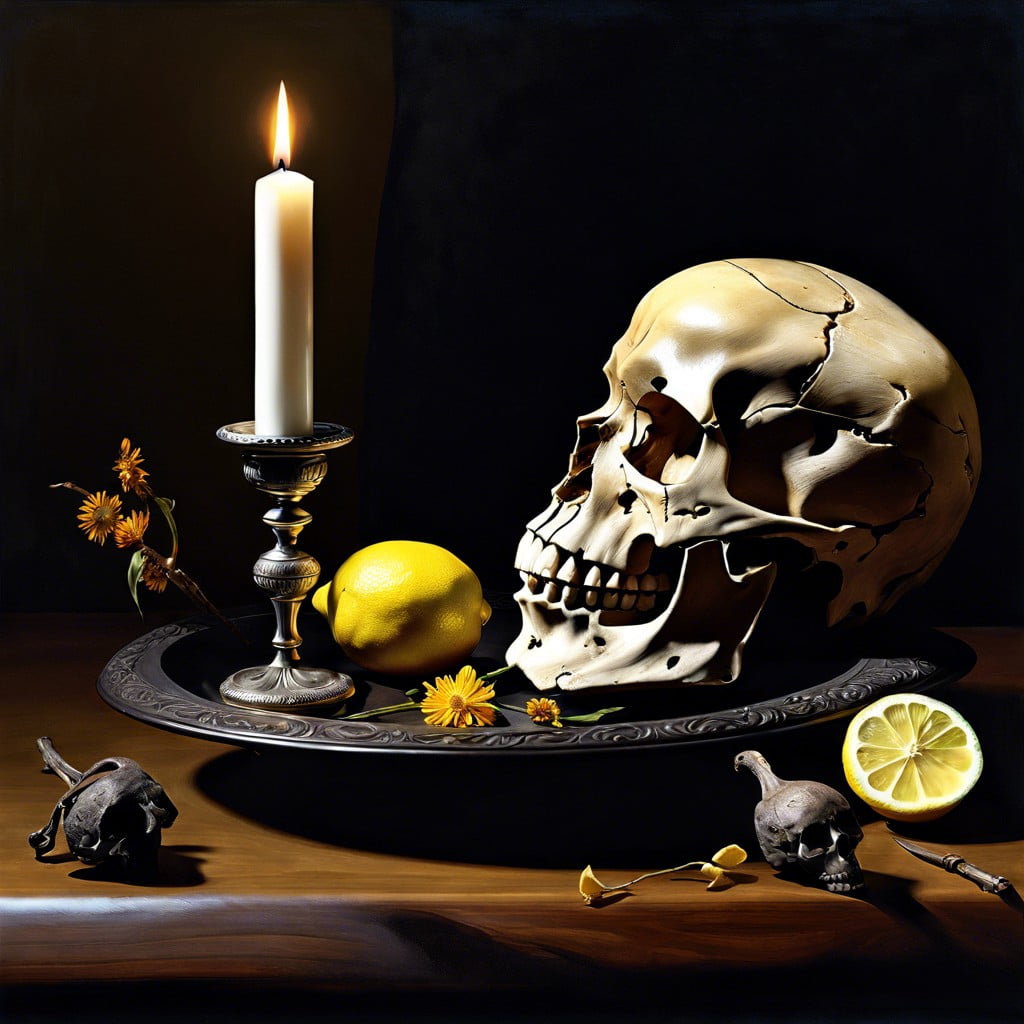Vanitas paintings meditate on the transient nature of earthly life and the inevitability of death.
Key takeaways:
- Vanitas paintings meditate on the transient nature of life and inevitability of death.
- Symbols include skulls, hourglasses, decaying objects, and luxury items.
- Vanitas paintings encourage self-reflection and pursuit of enduring values.
- Vanitas art emerged during the 17th century in the Netherlands.
- Regional differences in vanitas art reflect cultural influences and priorities.
The Essence of Vanitas Paintings

Vanitas paintings capture the fleeting nature of human life and the pointlessness of earthly achievements and pleasures. Through still-life artworks, these paintings underscore the inevitability of death and the transient beauty of worldly possessions. Artists often use decaying objects like wilting flowers or rotting fruit to represent the passage of time. Skulls and hourglasses are also common motifs, starkly reminding viewers of life’s impermanence.
The paintings serve as a contemplative prompt, encouraging self-reflection and the pursuit of more enduring values beyond material success. They are visual meditations on the balance between life’s temporary indulgences and the eternal, often with a moral or religious undertone suggesting that one’s focus should be on the spiritual rather than the material.
Memento Mori: The Reminder of Mortality
Embedded in the quiet stillness of vanitas paintings is a potent message: life’s persistent march towards an inevitable end. These works serve as visual meditations, capturing the fleeting nature of our worldly pursuits and accomplishments.
Key elements in these paintings often include skulls, a blunt representation of human mortality. Clocks and hourglasses appear, ticking away the seconds, reminding viewers of time’s unyielding progression. Overripe fruit and wilting flowers signal decay, symbolizing the physical body’s similar fate.
Furthermore, vanitas paintings frequently exhibit luxurious items—rich fabrics, precious metals, and scholarly objects—juxtaposed with symbols of death. This contrast is no mere aesthetic choice. It underlines the emptiness of material wealth and intellectual achievement in the face of mortality.
By contemplating these symbols, the observer is urged to reflect on the certainty of death. Thus, vanitas paintings encourage a deeper appreciation for the present moment and an awareness of the transient beauty in the midst of life’s impermanence.
The Symbolism of Common Vanitas Elements
In vanitas paintings, every object holds significance, alluding to the transience of life and the futility of pleasure.
Skulls, perhaps the most overt symbol, are a direct reminder of the inevitability of death. They are the quintessential memento mori — Latin for “remember you must die”.
Clocks and hourglasses signify the unstoppable passage of time and the brevity of human existence.
Extinguished candles and smoke serve as metaphors for the ephemeral nature of life, where light represents life and its extinguishment, death.
Books and maps may denote human knowledge and achievement, which, despite their worth, are ultimately left behind as one passes away.
Fruit and flowers, often depicted in a state of decay, symbolize the fleetingness of youth and beauty. In full bloom or ripe, these elements can suggest the peak of life, while their withering or rot hints at its approaching end.
Bubbles are reflective of the fragility and transient moments of life, liable to burst at any moment just like the fragile nature of human life.
These symbolic elements work in concert to deliver the artwork’s meditative message: the temporal nature of earthly achievements and pleasures compared to the eternal nature of death.
Historical Context of Vanitas Paintings in the 17th Century
Vanitas paintings emerged as a distinct genre during the early 17th century in the Netherlands, a period marked by religious turmoil and burgeoning trade wealth. Protestant Reformation had led to an iconoclastic movement, which drastically reduced the production of religious imagery in art. This cultural shift coincided with a burgeoning middle class that sought secular art forms to reflect on life’s transience.
The economic prosperity experienced in the Dutch Golden Age gave rise to memento mori themes that resonated with Calvinist teachings on the ephemerality of life and the futility of earthly pleasures. Artists infused their still-life compositions with allegorical objects such as skulls, wilting flowers, and hourglasses, serving as visual sermons that admonished viewers to lead a virtuous life mindful of its fleeting nature.
Throughout the century, vanitas paintings also became a platform for showcasing the artist’s technical skill, particularly in rendering textures and surfaces with lifelike precision—a testament to the era’s fascination with mastery over the material world, even as they acknowledged its ultimate insignificance.
Comparison of Regional Differences in Vanitas Art
Vanitas art, though sharing a common theme, showcases notable regional distinctions reflective of cultural influences and artistic priorities. Dutch and Flemish vanitas paintings, recognizably rich in detail and symbolism, often featured a cornucopia of objects. These spoke to the wealth and transient pleasures of the Golden Age – think of ornate skulls juxtaposed with fine timepieces, wilting flowers, and luxurious ephemera.
In contrast, Spanish vanitas works were more austere, aligning with the somber religious spirit of the period. Here, the emphasis lay on asceticism, and artists frequently used skulls and bones as central motifs, with less array of material goods. This simplicity underlined the spiritual message – a meditation on life’s fleeting nature and the inevitability of death.
Italian vanitas paintings, injected with a Baroque flair, infused their works with a dramatic interplay of light and shadow. This chiaroscuro heightened the emotional impact of the decaying fruits, withered plants, and other symbols of the ephemeral.
French vanitas, while still embodying the essence of the theme, incorporated more allegorical elements. Allegory melded with luxury, depicting vanities against a backdrop of wealth’s trappings, pointing to the futility of such pursuits in the face of mortality.
These variations illustrate not just the meditation on life’s transience, but also the cultural lens through which each region contemplated existence’s temporal nature.